Do you want to generate newsworthy, viral content? If yes, don’t worry we are here to help you with how your content can resonate on social media with the help of timing and emotions. What causes content to become viral? Our most recent research indicates that writing stories that resonate, publishing at the proper time, and evoking particular emotions are important.
Businesses can develop campaigns that inspire genuine connection and reach a larger audience by understanding the emotional factors that result in viral content.
We have researched the elements that lead to viral success and examined the trends, and actions that cause important to go viral. Based on research and tried-and-true tactics, we’ll dissect the essential components that can transform a piece of content into a viral phenomenon in this blog.
What We Can Benefit from Research
Understanding the science underlying virality is crucial before we can discuss practical tactics. Although it is impossible to forecast exactly what will make a piece of content go viral, research has shown several key characteristics that frequently encourage extensive sharing and interaction. Psychological triggers, social dynamics, and information formats that deeply connect with people are the foundation of these components.
- Engagement Is Driven by Emotion
- People Talk About What Makes Them Appear Nice
- Information That Addresses Issues
- The Influence of Narrative
- Having the Correct Position at the Correct Time
- Shareability and Visual Appeal
How We Can Assist You in Producing Viral Content
We recognize that producing viral content is a science and not an accident. We assist our clients in producing content that has the potential to become viral by combining the scientifically supported concepts of emotion, social currency, narrative, and visual appeal. Here’s how we can assist you:
- Provide content that appeals to your audience’s emotions.
- Write attention-grabbing, relationship-building stories that people want to share.
- Make sure your information reaches as many people as possible by optimizing it for social media sharing.
- Use current events and cultural trends to add relevance and timeliness to the content you create.
Conclusion
Research indicates that emotional appeal, social currency, practical value, storytelling, and visual engagement are all important factors in making information go viral, even though there isn’t a secret formula. We can increase your chances of reaching a larger audience, creating buzz, and increasing interaction by coordinating the way you write with these guidelines.
At ROILift, the best content marketing company in New York, we help you create content that is memorable and connects with your audience by fusing data-driven insights with innovative tactics. Get in touch with us right now if you’re ready to improve your content marketing and produce material that could become viral.



